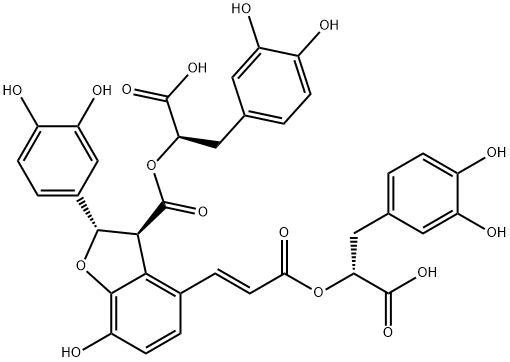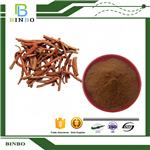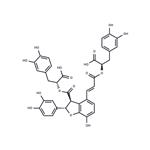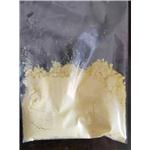Salvianolic acid A (Sal A) and salvianolic acid B (Sal B) were isolated and purified from the crude extract of Salvia miltiorrhiza. Antioxidant activities of Sal A and Sal B were also evaluated and the ABTS results showed that Sal A and Sal B exhibited high total antioxidant activities, their EC50 values were 1.35 0.00 and 1.43 0.01 .mu.g/mL. This compound always contains a significant amount of residual solvent.
ChEBI: Salvianolic acid B is a member of the class of 1-benzofurans that is an antioxidant and free radical scavenging compound extracted from S. miltiorrhiza It has a role as a plant metabolite, an anti-inflammatory agent, an antioxidant, a hypoglycemic agent, an osteogenesis regulator, an apoptosis inducer, a hepatoprotective agent, a neuroprotective agent, a cardioprotective agent, an autophagy inhibitor, an antidepressant and an antineoplastic agent. It is a polyphenol, a member of 1-benzofurans, an enoate ester, a dicarboxylic acid and a member of catechols.
Salvianolic acid B is one of the main water soluble bioactive components of Salvia miltiorrhiza medicinal plant, the root of which is used in the treatment of dysmenorrhea, coronary heart disease, chronic renal failure, cerebrovascular disease, hypertension, and cytotoxicity against human tumor cell lines.
Salvianolic acid B is a cell protective antioxidant and free radical scavenger being investigated for a variety of conditions from ischemic heart disorders to Alzheimer′s disease. Several mechanisms of action have been proposed including EGFR, PDGF and MMP-9 inhibition and inhibition of the TGF-β1/Smads and NF-κB signaling pathways. Salvianolic acid B acts as scavengers of reactive oxygen species, reduces the adherence of leukocytes to endothelial cells, inhibits matrix metalloproteinases and inflammation. It has cardioprotective effects as it reduces lipid peroxidation in damaged cardiac tissue and decreases the leakage of lactic acid dehydrogenase.



